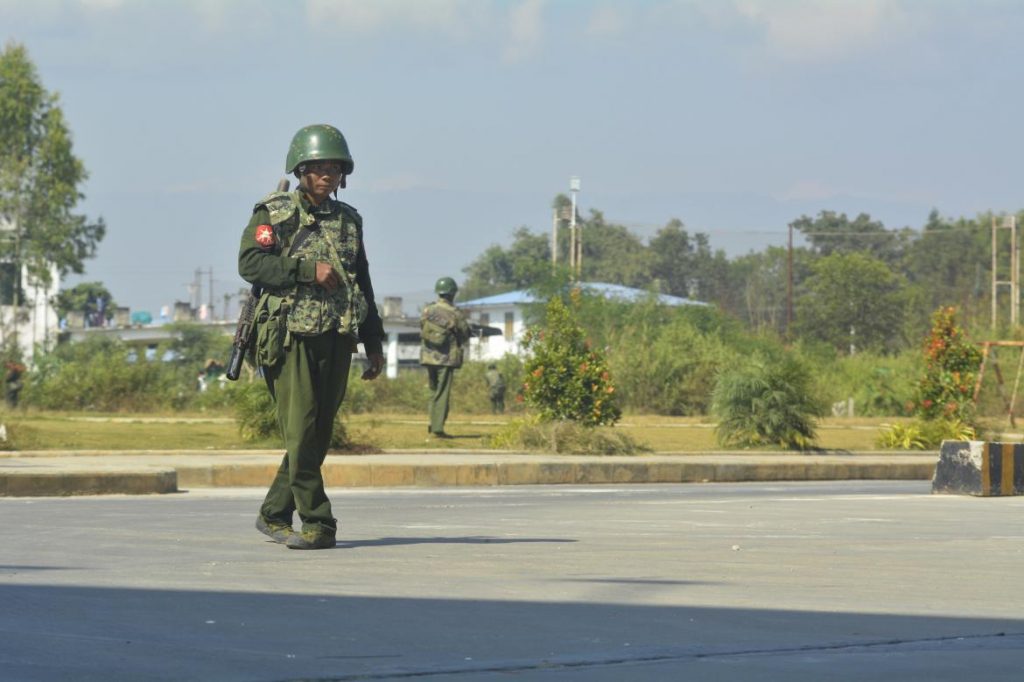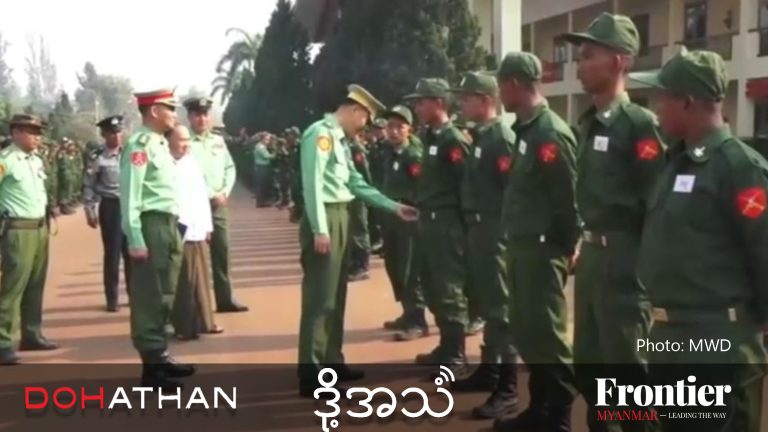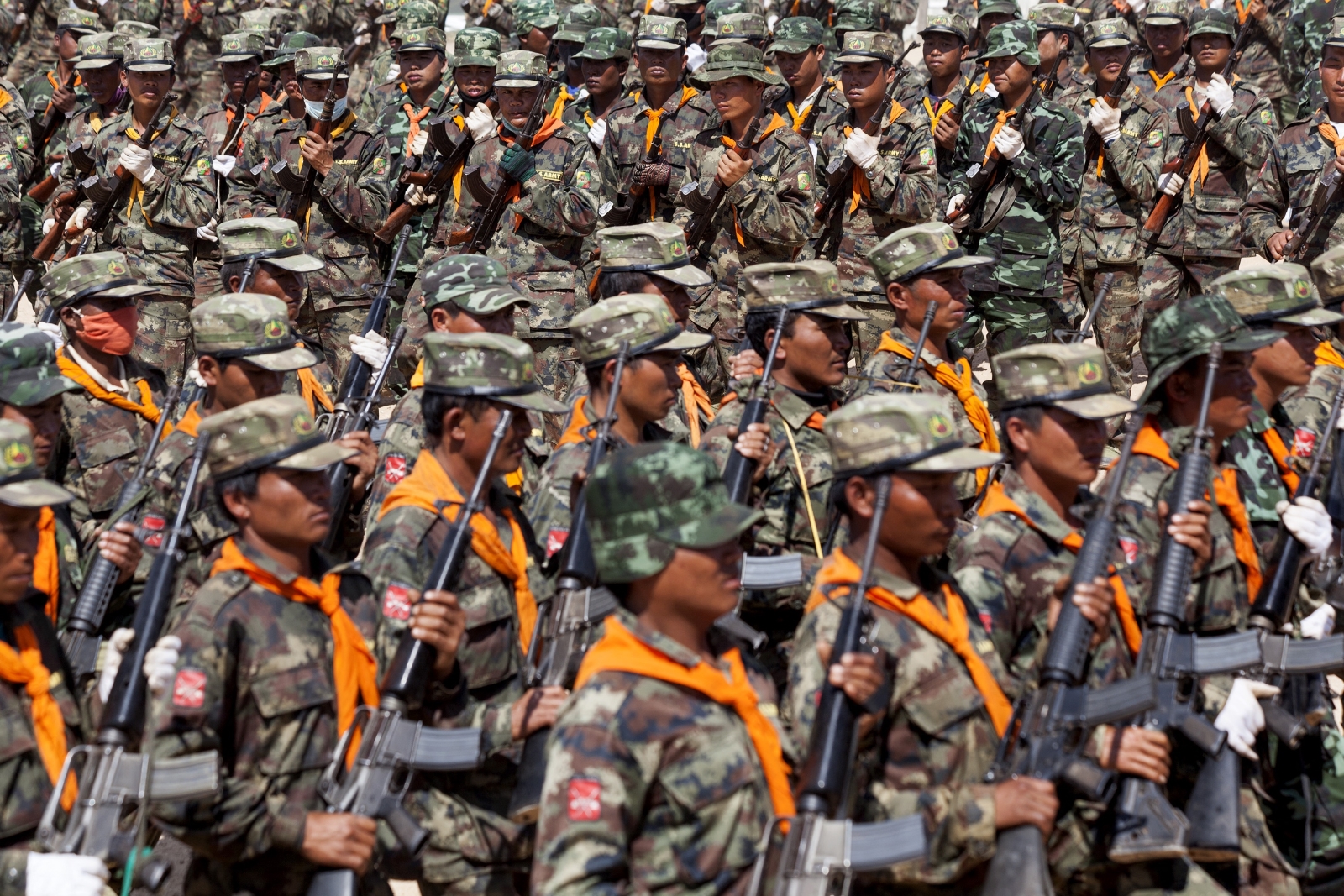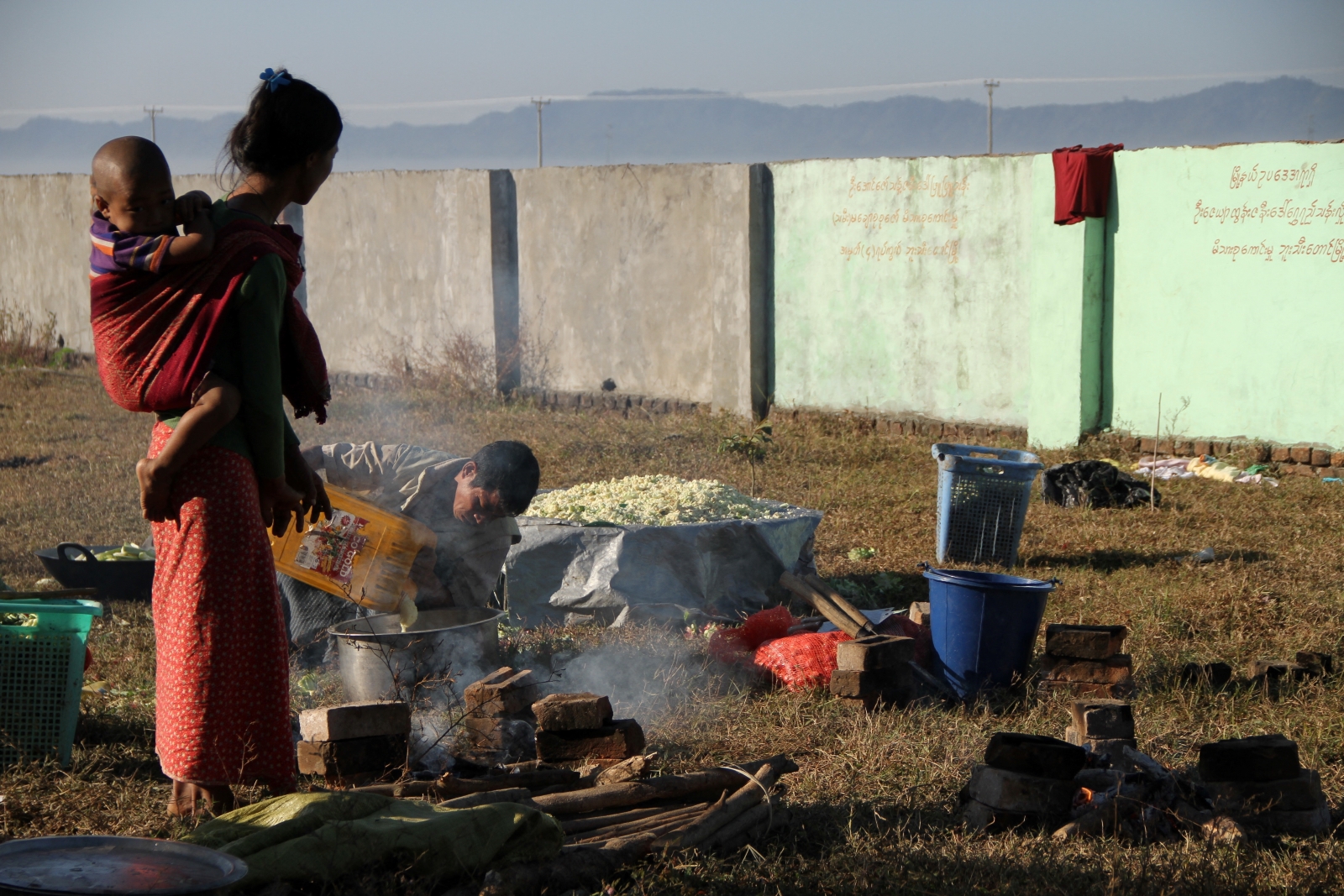The surprise offensive by the Northern Brotherhood alliance in northern Shan State is a setback for the peace process and the cause of national reconciliation.
By SITHU AUNG MYINT | FRONTIER
AN ALLIANCE of four ethnic armed groups based in the north of the country launched coordinated attacks on Tatmadaw positions, police stations and other targets near the busy border trade town of Muse in northeastern Shan State early on November 20.
An objective of the attacks, which left about 10 people dead, injured dozens and sent thousands fleeing to China, was to disrupt border trade and the movement of local people by blocking one of Myanmar’s major highways.
The attacks have come as State Counsellor Daw Aung San Suu Kyi is striving to bring peace to the country, a task she said in January would be the “first priority” of her government. I’d like to discuss what motivated the four groups to launch the offensive and whether they will achieve their objectives.
The Northern Brotherhood alliance comprises the Kachin Independence Army – one of the most powerful ethnic armed groups – Arakan Army, Ta’ang National Liberation Army and Myanmar National Democratic Alliance Army, known as the Kokang group. None are signatories of the Nationwide Ceasefire Agreement signed by the previous government and eight ethnic armed groups on October 15 last year.
Support more independent journalism like this. Sign up to be a Frontier member.
Their well-planned operation included targets at the 105-mile trade zone, about 10 kilometres from Muse. They have damaged the highway and bombed some bridges, and halted traffic. Some trucks transporting goods to China have been set on fire. The disruption to trade has been considerable, causing heavy economic losses.
In a statement on November 23, the Kachin Independence Army said the attacks were an “inevitable” response to the “tremendous” pressure placed on the groups by the Tatmadaw to sign the NCA.
“It was a controlled/limited offensive and was not intended to destroy national reconciliation,” said the KIA, which has been under heavy pressure from the Tatmadaw since the collapse in June 2011 of a bilateral ceasefire signed in 1994.
The Northern Brotherhood alliance offensive has been motivated by the politics of the peace process.
The NCA, approved by the Pyidaungsu Hluttaw on December 8, 2015, has paved the way for the eight signatories, which include the Karen National Union, to participate in a political dialogue aimed at leading eventually to constitutional reform and the establishment of a federal democratic union of Myanmar.
The non-signatories, who comprise a majority of the country’s armed groups and are represented by the United Nationalities Federal Council, have been locked out of the dialogue process, despite a concerted effort to achieve inclusion.
The KIA, a leading member of the UNFC, has insisted that it will only sign the NCA if the MNDAA, TNLA and AA can be signatories. The Tatmadaw has demanded that the MNDAA, TNLA, AA renounce armed struggle before it will withdraw its opposition to the three groups signing the NCA. The three groups have spurned the Tatmadaw’s offer. However, there’s speculation that the reason given by the groups for refusing to sign is a superficial excuse.
The real reason is that the signatories and non-signatories have vastly different attitudes about the best way to achieve peace. Indeed, they are travelling in opposite directions on the issue.
The government, Tatmadaw and eight groups led by the KNU believe that the only way forward is an inclusive NCA followed by political dialogue.
The KIA argues that a ceasefire agreement is not necessary and the process should begin with political dialogue. If the political dialogue is successful, says the KIA, the fighting will end automatically.
As well as clearly not being interested in signing the nationwide ceasefire, the group has not seriously pursued negotiations on a new bilateral ceasefire. Some might argue that the KIA has sought to use military force to achieve its goal of autonomy.
In her November 23 statement calling for an end to the fighting in Muse and Kutkai, Aung San Suu Kyi urged the four groups “to join the government’s peace process by signing the NCA”.
The statement is a repudiation of way to peace favoured by the KIA. It amounts to a rejection of the KIA’s approach by a government elected by an overwhelming majority of the people.
The disruption to trade with China through Muse has not won the KIA any friends among the businesspeople who have adversely affected. The group also won’t get much support from the international community.
The so-called limited war by the KIA and its Northern Brotherhood allies might succeed in its military objective of putting pressure on the Tatmadaw. However, it is certain to be politically damaging for the KIA, and despite its recent statement, does nothing to advance the cause of national reconciliation.







